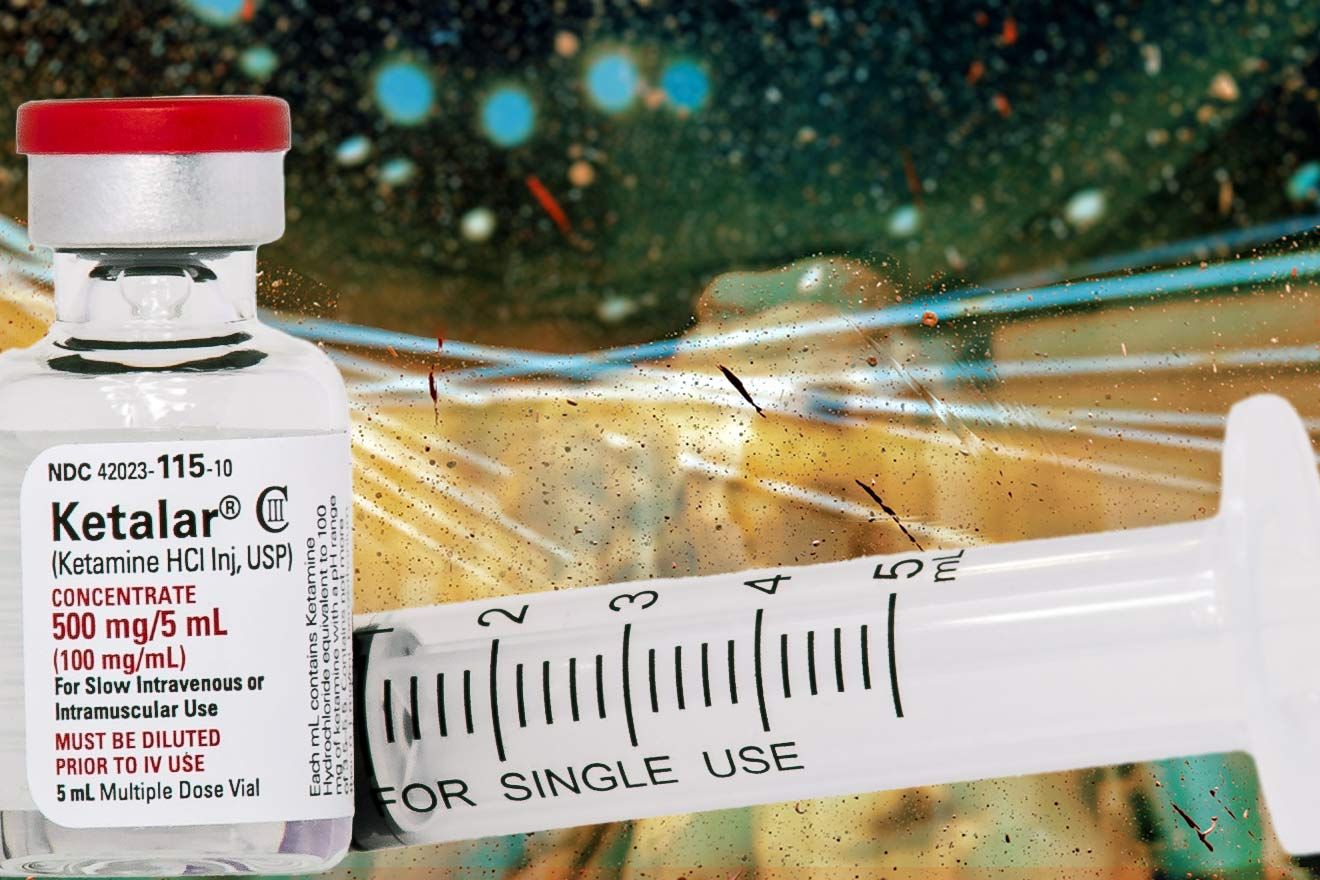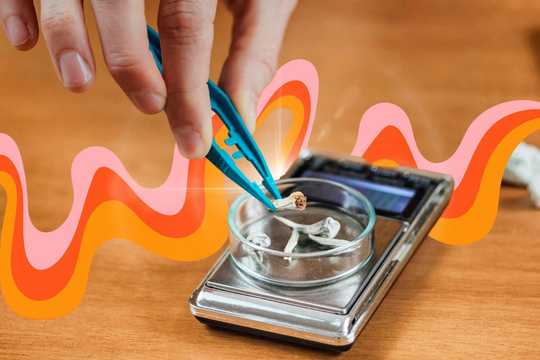Ketamine has soared in popularity as the first psychedelic to be made therapeutically available in the United States. But throughout the commercialization process, the standards for ketamine treatment changed. Here are five lessons we can learn from ketamine commercialization.
Since becoming widely available, ketamine has improved the quality of life for patients with depression, anxiety, PTSD, and more. It’s relatively safe, acts fast, and has sustained antidepressant effects. It could even help with neuroplasticity and forming new brain connections.[1]
But ketamine’s journey from research to commercialization has taken some interesting detours. From highly controlled clinical trials to outpatient infusion centers, we’ve watched the mode of delivery change drastically. Here’s a brief synopsis of ketamine history, research, and commercialization.
Follow your Curiosity
Sign up to receive our free psychedelic courses, 45 page eBook, and special offers delivered to your inbox.The Ketamine Story
In the ‘60s, ketamine came on the scene as a tool for surgery and critical care. Its ability to anesthetize patients without suppressing breathing or heart rate made it a relatively safe drug. It was especially appealing among other surgical drugs at the time because it was inexpensive and easy to administer.[2]
Ketamine’s uses quickly evolved beyond anesthesia. It’s also a useful pain reliever for acute injuries, like burns, and operative and post-operative pain. Chronic pain is also responsive to ketamine, like migraines, fibromyalgia, and phantom limb pain.[2]
This ability to quickly treat pain made ketamine an essential tool in military operations. In the ‘70s, it was used as an anesthetic during the Vietnam war. It alleviated injury pain from combat and was an excellent medication because of its easy administration and portability.[3]
During this time, ketamine also started appealing to a broader recreational audience. “Special K” gained popularity in the ‘70s and ‘80s for its hallucinogenic effects. But it also could quickly cause dissociation, which made it a dangerous date rape drug. Its use spread from the west coast, making it a well-known substance used for partying and raves.[2, 4]
In 1999, the United States Drug Enforcement Agency made ketamine a Class III controlled substance.[5] Ketamine’s clinical and illicit uses declined.
Ketamine has also been used in animals, like other medications with good clinical safety and efficacy in humans. This is most likely how it became known as a horse tranquilizer among the general public. It’s used today as an effective immobilizer for horses needing treatment or veterinary assessment.[6]
Ketamine’s antidepressant effects weren’t researched until 2000, when it was found to help patients who were recently prescribed antidepressants.[7] While SSRIs may take weeks to relieve depression, ketamine works much more quickly.
More studies have followed, with ketamine applied to other mental health diagnoses like anxiety, substance addiction, and PTSD. Much of this research focused on ketamine in the setting of therapy or ketamine-assisted psychotherapy (KAP). The process went as follows:
- Before receiving infusions, patients had an opportunity to develop a relationship with their therapist.
- During their sessions, patients were typically supervised, followed by therapeutic sessions for integration.
- After their sessions, patients were supported by an interdisciplinary team of therapists and medical personnel.
This structure allows patients to experience the benefits of ketamine and the enhanced integration and support that comes with talk therapy. Under this structure, ketamine had significant outcomes for mental health diagnoses.
Today, ketamine is listed on the World Health Organization’s list of essential medicines for its anesthetic properties.[8] Because of success in mental health research, it’s now available as an “off-label” mental health treatment at clinics across the country.
Psychedelic Support sees many parallels with ketamine therapy and other psychedelics, like MDMA. We hope that we can take the evolving story of ketamine and learn from it for the future. Let’s get to the five lessons we can learn from ketamine commercialization.
1. Research Methods Gets “Watered Down” by Commercial Interests
From research to therapeutic application, the modes of ketamine delivery have changed.
Today, many outpatient infusion centers don’t require patients to go through time-consuming sessions with a ketamine therapist. Patients can book an outpatient ketamine infusion and receive ketamine through an anesthesiologist or CRNA (Certified Registered Nurse Anesthetist). This model doesn’t include the therapeutic support or integration that was an essential component of research.
We don’t yet know how this stripped-down model affects patient outcomes. Compared to only ketamine infusion, receiving ketamine-assisted psychotherapy creates very different treatments for patients. There’s little distinguishing these two models on the patient side, yet they are considerably different.
There are some advantages to the ketamine infusion model. With diverse providers allowing access to ketamine, more patients have opportunities to experience its benefits. Infusions are less time-consuming for patients, with many providers allowing discharge about an hour after an infusion session is complete.
Part of the difficulty in building a new model for experiential medicine is that we don’t have a precedent for pairing substance with integration. There’s no requirement for ketamine providers to help patients with integration after their session. We hope that the Food and Drug Administration will require integration therapy for other psychedelics as they become available for therapy.
For more on ketamine therapy vs. ketamine infusions, check out our article.
2. We Need Therapeutic Standards of Care in Psychedelic Therapy
Requiring integration therapy falls under the larger umbrella of therapeutic standards of care. As with any new treatment option, standards of care will have to be established to set expectations for psychedelic therapy. We believe that rigorous standards will help reduce harm for patients and ensure that some basic requirements are met for all clinicians.
Standards of care start with a baseline of clinician education, either verified through certification or licensure. Right now, there is no standard education requirement for clinicians offering ketamine-assisted psychotherapy or ketamine infusions. In the future, we hope this will change.
For instance, MAPS intends to require that all MDMA providers undergo approved education before being able to deliver therapy.
Another example of therapeutic standards of care should be follow-up appointments after a patient has completed therapy. This is also not required for clinicians who administer ketamine infusions. Without this core component of evidence-based medicine, we can’t hope to learn and evolve from patient outcomes.
For now, it’s up to individual ketamine providers to uphold care standards within their own practices. Psychedelic Support hopes that commercialization for other psychedelic therapies will include more protections for patients.
3. Experts Don’t All Agree on Standards of Care
Of course, to establish good care standards, more clinicians must agree on them. This has been challenging in other specialties, and it continues to be a challenge within psychedelic medicine.
Some medical professionals don’t agree that ketamine therapy should require psychotherapeutic support. The National Library of Medicine’s guidelines for ketamine administration doesn’t mention integration or talk therapy.[9] While we don’t agree with this decision, it warrants conversation between practitioners on the medical and therapy sides.
We hope that psychedelic therapy will foster more interdisciplinary communication between the medical and therapeutic teams. We serve patients better when we can coordinate care, and we can learn from each other in the process.
When we collaborate, patients get better outcomes. We foresee that the psychedelic Co-Therapy team will be a blend of nursing, medical, and mental health professionals who can come together to give patients the best outcomes possible.
4. Clinicians Want to Offer Psychedelic Interventions
Ketamine commercialization has resulted in the proliferation of new ketamine clinics across the country. Without the use of talk therapy after ketamine infusions, clinicians, some with little mental health background, are overly enthusiastic to offer ketamine to their patients. While we await more therapy standards, we see more and more clinicians bringing psychedelic medicine to patients.
This enthusiasm for ketamine is encouraging for the field of emerging psychedelics. Amidst a failing mental health system, ketamine has become accessible. We’ll need thousands more psychedelic clinicians to make these cutting-edge therapies available to the masses.
Other therapies, like MDMA and psilocybin, could experience the same accessibility. Ketamine has shown us that clinicians want to offer psychedelic interventions that can help patients achieve a new quality of life. But at the same time, profit motives and a lack of clinical standards is concerning.
5. People Are Open to Psychedelic Therapy
Despite its association with horse tranquilizers and party drugs, people are open to Ketamine. Millions of Americans have experienced ketamine infusions and therapy in the last two years. Many have experienced life-changing relief from mental illness.[10]
Our failing mental health system has left so many people without options. After unsuccessful courses of SSRIs, years of unsuccessful therapy, or multiple relapses in substance abuse, many people feel they are out of options. Yet these are the exact people that psychedelic therapy can potentially help.
The ketamine story has shown us that we’re ready for psychedelic medicine commercialization. Despite decades of negative rhetoric around these substances, people are interested in a mental health treatment that is different from conventional medications.
Interested in Providing Ketamine-Assisted Therapy for Your Patients?
We’re closely following the evolving story of ketamine commercialization, and what it means for other psychedelics. We hope that you’ll join us in advocating for safe, high-quality, accessible psychedelic therapies.
Psychedelic Support partners with the nation’s best clinical training programs to prepare providers to deliver ketamine-assisted psychotherapy. Through five modules and 40 hours of continuing education, you’ll learn the skills needed for ketamine administration and psychotherapy. Enroll in our Ketamine Assisted Training Course today.
References:
- Muscat, S.-A., Hartelius, G., Crouch, C. R., & Morin, K. W. (2021). An integrative approach to ketamine therapy may enhance multiple dimensions of efficacy: Improving therapeutic outcomes with treatment resistant depression. Frontiers in Psychiatry, 12. https://doi.org/10.3389/fpsyt.2021.710338
- Li, L., & Vlisides, P. E. (2016). Ketamine: 50 Years of Modulating the Mind. Frontiers in human neuroscience, 10, 612. https://doi.org/10.3389/fnhum.2016.00612
- Mercer SJ. ‘The Drug of War’–a historical review of the use of Ketamine in military conflicts. J R Nav Med Serv. 2009;95(3):145-50. PMID: 20180434.
- Sassano-Higgins, S., Baron, D., Juarez, G., Esmaili, N., & Gold, M. (2016). A review of ketamine abuse and diversion. Depression and Anxiety, 33(8), 718–727. https://doi.org/10.1002/da.22536
- Rules – 1999. 1999 – Placement of Ketamine into Schedule III. (n.d.). Retrieved May 15, 2022, from https://www.deadiversion.usdoj.gov/fed_regs/rules/1999/fr0713.htm
- Roşu, O., Melega, I., Evans, A. L., Arnemo, J. M., & Küker, S. (2021). Evaluation of Medetomidine-Ketamine for Immobilization of Feral Horses in Romania. Frontiers in veterinary science, 8, 655217. https://doi.org/10.3389/fvets.2021.655217
- Berman, R. M., Cappiello, A., Anand, A., Oren, D. A., Heninger, G. R., Charney, D. S., et al. (2000). Antidepressant effects of ketamine in depressed patients. Biol. Psychiatry. 47, 351–354. doi: 10.1016/s0006-3223(99)00230-9
- World Health Organization: WHO model lists of essential medicines. Who.int. Available at https://www.who.int/medicines/publications/essentialmedicines/en/; accessed September 18, 2020.
- Rosenbaum SB, Gupta V, Palacios JL. Ketamine. [Updated 2021 Nov 20]. In: StatPearls [Internet]. Treasure Island (FL): StatPearls Publishing; 2022 Jan-. Available from: https://www.ncbi.nlm.nih.gov/books/NBK470357/
- Mollaahmetoglu, O. M., Keeler, J., Ashbullby, K. J., Ketzitzidou-Argyri, E., Grabski, M., & Morgan, C. J. (2021). “This is something that changed my life”: A qualitative study of patients’ experiences in a clinical trial of ketamine treatment for alcohol use disorders. Frontiers in Psychiatry, 12. https://doi.org/10.3389/fpsyt.2021.695335






